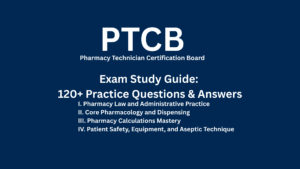
A resume is more than just a document; it’s your first impression to a potential employer. For fresh graduates and career changers, this one-page pitch must be sharp, relevant, and error-free. Yet many job seekers unknowingly make common mistakes like typos and using outdated information that can land their resume in the rejection pile.
So, before you sink hours into crafting the “perfect” resume, it is better to know these common mistakes and how to fix them.
Key Takeaways
- Your resume shouldn’t have any typos or grammatical mistakes.
- Adding different formats, tables, and fonts can confuse ATS and recruiters.
- Only include your contact information and name as personal information.
- Don’t add information for your references.
1. Typos and Grammar Mistakes
Typos and grammar mistakes have no place in the professional world; however, you must avoid them at all costs to even enter the job market. Even a small typo can derail an otherwise strong resume.
Why It Hurts
Spelling and grammar errors show a lack of attention to detail. Employers and especially Applicant Tracking Systems (ATS) often assume that if you overlook mistakes in your resume, you’ll make similar errors on the job.
How to Fix It
Use grammar-check tools like Grammarly and always have someone proofread your resume, preferably a teacher or a senior. Read it aloud or print it for better visibility.
2. Using a Generic Resume for Every Job
Sending out the same resume to multiple employers might seem efficient, but it reduces your chances. We understand it can get overwhelming to craft a different resume for every employer, but it’s always worth it once you land your dream job.
Why It Hurts
A generic resume doesn’t speak directly to a specific job, and once again, it also risks being filtered out by applicant tracking systems (ATS) for not using the right keywords.
How to Fix It
Customize each resume with the job title, keywords, and key skills listed in the job description. Highlight your most relevant experience first. For instance, if you are applying for the role of pharmacy technician, then it’s best to write employer-specific skills on your pharma tech resume, like prescription processing, inventory management, medication preparation, and more.
3. Skipping Keywords
In the age of AI, leaving your job-related keywords is as big of a mistake as typos because ATS will quickly discard your resume.
Why It Hurts
According to statistics, employers train ATS to filter by specific keywords, and if your resume doesn’t contain those keywords, you are not going to get a call for the interview.
How to Fix It
Use online tools to scan your resume for keywords and adjust accordingly. Additionally, you can reach out to the CCI Training Center’s Career Services, and our experts will help you craft an ATS-friendly resume aligned with your niche.
4. Poor Formatting and Layout
Human resources professionals do NOT like cluttered, inconsistent, or overly creative layouts.
Why It Hurts
Recruiters get hundreds of resumes on a weekly basis (if not more), so they skim resumes quickly, and poor formatting makes it hard to scan and may appear unprofessional.
How to Fix It
Stick to a clean, single-column format. Use consistent font sizes, spacing, and headers. Avoid graphics or text boxes that HRs and ATS systems can’t read.
| Tip: While writing a resume, also focus on the 3Fs: Focus, Formatting, and Functionality |
5. Including Irrelevant or Outdated Information
More information doesn’t mean better.
Why It Hurts
Irrelevant jobs, outdated skills, or personal information (like marital status or hobbies) take up space and distract from what matters. Employers only need to look at your professional information.
How to Fix It
Include only experience from the past 10–15 years that aligns with your current goals. Focus on skills, certifications, or experience that support your next step.
6. No Career Objective or Summary
Much like a direction in a career, your resume requires a clear summary. Jumping straight into experience leaves your resume without direction.
Why It Hurts
Not having a career objective or summary can confuse recruiters as to what your goals are or what role you’re pursuing. This becomes even more problematic if you’re a career changer.
How to Fix It
Write a 2–3 sentence summary at the top. Clarify your career direction and what you bring to the table.
7. Failing to Quantify Achievements
Listing duties without outcomes makes your contributions unclear.
Why It Hurts
Saying “Managed customer service team” is less compelling than “Managed 5-person team and improved response time by 30%.” Numbers provide proof.
How to Fix It
Include metrics where possible: percentages, revenue, team size, or project results. Use action verbs and show outcomes.
NOTE: If you don’t have prior work experience, share your GPA and academic statistics.
8. Submitting Without a Cover Letter
Even if the job posting doesn’t ask for it, skipping this step can work against you.
Why It Hurts
No cover letter can be interpreted as a lack of interest or effort. It also removes your chance to explain career changes or gaps.
How to Fix It
Always include a tailored cover letter for each role unless specifically told not to. Use it to connect your experience to the job and company.
9. Using Weak or Passive Language
Avoid filler words and vague responsibilities.
Why It Hurts
Phrases like “Assisted with tasks” or “Was involved in projects” lack impact and don’t show leadership or initiative. Not to mention they don’t pass through ATS.
How to Fix It
Start bullets with strong action verbs: Led, Designed, Resolved, Increased. Use direct, concise statements.
10. Not Updating Your Resume Regularly
If it’s been a while since your last update, your resume might not reflect your latest accomplishments.
Why It Hurts
You risk underselling your current capabilities and missing out on recent certifications, tools, or responsibilities.
How to Fix It
Review and update your resume every 6 months. Ensure your contact info, recent roles, and skills are all current.
11. Ignoring ATS Guidelines
We understand that by now you may be developing a hate for ATS; however, these have been essential to the recruiting process, and you must create your resume while adhering to ATS guidelines.
Why It Hurts
ATS software might not read columns, tables, or graphics correctly. That means your resume could be discarded before a human even sees it.
How to Fix It
Use standard fonts and layouts. Submit in Word or PDF as required. Avoid headers, footers, and unusual formatting.
12. Undervaluing Transferable Skills
Career changers or fresh grads often make the mistake of not emphasizing the skills they already have.
Why It Hurts
Hiring managers need help connecting your past experiences to the new role. Without clear transferable skills, you appear less qualified.
How to Fix It
Highlight soft skills, certifications, volunteer work, or academic projects that align with the role. Create a “Projects” or “Relevant Experience” section if needed.
13. Adding References
It is a common understanding that employers ask for references; however, it doesn’t mean you need to list them on your resume.
Why It Hurts
Adding references and their contact information may appear unprofessional and also clutter your resume.
How to Fix It
Recruiters request references later in the hiring process, so unless they’ve specifically asked you to list references, it is best not to include them in your resume.
14. Hiding Gaps
Strategically not showing your gap in your resume is a big no-no.
Why It Hurts
Employers can figure out if you’re lying about your gap on your resume. This can make you appear unprofessional and untrustworthy.
How to Fix It
It’s important to understand that having a gap in your resume is okay. Be honest about the gap; mention if you invested that time in learning a soft skill, or if you were occupied with something else, like raising a child.
Final Words
Avoiding these 14 mistakes can help your application stand out, especially in competitive fields like IT and healthcare. Always remember, your resume should market your strengths clearly and confidently.
If you have any concerns regarding creating a resume or need help with interview preparation, feel free to reach out to our experts.
Program Offered
- Pharmacy Technician Training
- Online Medical Assistant
- Medical Billing and Coding Specialist Program
- Cloud Computing Technician Training
- Computer Network Technician
- Business and Accounting
- Radiology Technician Training
- Medical Assistant Program
- Computer Support Technician
- Cybersecurity Program
- Virtual Assistant Training

This article is written by
Share this article

- Your resume shouldn’t have any typos or grammatical mistakes.
- Adding different formats, tables, and fonts can confuse ATS and recruiters.
- Only include your contact information and name as personal information.
- Don’t add information for your references.
1. Typos and Grammar Mistakes
Typos and grammar mistakes have no place in the professional world; however, you must avoid them at all costs to even enter the job market. Even a small typo can derail an otherwise strong resume. Why It Hurts Spelling and grammar errors show a lack of attention to detail. Employers and especially Applicant Tracking Systems (ATS) often assume that if you overlook mistakes in your resume, you’ll make similar errors on the job. How to Fix It Use grammar-check tools like Grammarly and always have someone proofread your resume, preferably a teacher or a senior. Read it aloud or print it for better visibility.2. Using a Generic Resume for Every Job
Sending out the same resume to multiple employers might seem efficient, but it reduces your chances. We understand it can get overwhelming to craft a different resume for every employer, but it’s always worth it once you land your dream job. Why It Hurts A generic resume doesn’t speak directly to a specific job, and once again, it also risks being filtered out by applicant tracking systems (ATS) for not using the right keywords. How to Fix It Customize each resume with the job title, keywords, and key skills listed in the job description. Highlight your most relevant experience first. For instance, if you are applying for the role of pharmacy technician, then it’s best to write employer-specific skills on your pharma tech resume, like prescription processing, inventory management, medication preparation, and more.3. Skipping Keywords
In the age of AI, leaving your job-related keywords is as big of a mistake as typos because ATS will quickly discard your resume. Why It Hurts According to statistics, employers train ATS to filter by specific keywords, and if your resume doesn’t contain those keywords, you are not going to get a call for the interview. How to Fix It Use online tools to scan your resume for keywords and adjust accordingly. Additionally, you can reach out to the CCI Training Center’s Career Services, and our experts will help you craft an ATS-friendly resume aligned with your niche.4. Poor Formatting and Layout
Human resources professionals do NOT like cluttered, inconsistent, or overly creative layouts. Why It Hurts Recruiters get hundreds of resumes on a weekly basis (if not more), so they skim resumes quickly, and poor formatting makes it hard to scan and may appear unprofessional. How to Fix It Stick to a clean, single-column format. Use consistent font sizes, spacing, and headers. Avoid graphics or text boxes that HRs and ATS systems can’t read.| Tip: While writing a resume, also focus on the 3Fs: Focus, Formatting, and Functionality |
5. Including Irrelevant or Outdated Information
More information doesn’t mean better. Why It Hurts Irrelevant jobs, outdated skills, or personal information (like marital status or hobbies) take up space and distract from what matters. Employers only need to look at your professional information. How to Fix It Include only experience from the past 10–15 years that aligns with your current goals. Focus on skills, certifications, or experience that support your next step.6. No Career Objective or Summary
Much like a direction in a career, your resume requires a clear summary. Jumping straight into experience leaves your resume without direction. Why It Hurts Not having a career objective or summary can confuse recruiters as to what your goals are or what role you’re pursuing. This becomes even more problematic if you’re a career changer. How to Fix It Write a 2–3 sentence summary at the top. Clarify your career direction and what you bring to the table.7. Failing to Quantify Achievements
Listing duties without outcomes makes your contributions unclear. Why It Hurts Saying “Managed customer service team” is less compelling than “Managed 5-person team and improved response time by 30%.” Numbers provide proof. How to Fix It Include metrics where possible: percentages, revenue, team size, or project results. Use action verbs and show outcomes. NOTE: If you don’t have prior work experience, share your GPA and academic statistics.8. Submitting Without a Cover Letter
Even if the job posting doesn’t ask for it, skipping this step can work against you. Why It Hurts No cover letter can be interpreted as a lack of interest or effort. It also removes your chance to explain career changes or gaps. How to Fix It Always include a tailored cover letter for each role unless specifically told not to. Use it to connect your experience to the job and company.9. Using Weak or Passive Language
Avoid filler words and vague responsibilities. Why It Hurts Phrases like “Assisted with tasks” or “Was involved in projects” lack impact and don’t show leadership or initiative. Not to mention they don’t pass through ATS. How to Fix It Start bullets with strong action verbs: Led, Designed, Resolved, Increased. Use direct, concise statements.10. Not Updating Your Resume Regularly
If it’s been a while since your last update, your resume might not reflect your latest accomplishments. Why It Hurts You risk underselling your current capabilities and missing out on recent certifications, tools, or responsibilities. How to Fix It Review and update your resume every 6 months. Ensure your contact info, recent roles, and skills are all current.11. Ignoring ATS Guidelines
We understand that by now you may be developing a hate for ATS; however, these have been essential to the recruiting process, and you must create your resume while adhering to ATS guidelines. Why It Hurts ATS software might not read columns, tables, or graphics correctly. That means your resume could be discarded before a human even sees it. How to Fix It Use standard fonts and layouts. Submit in Word or PDF as required. Avoid headers, footers, and unusual formatting.12. Undervaluing Transferable Skills
Career changers or fresh grads often make the mistake of not emphasizing the skills they already have. Why It Hurts Hiring managers need help connecting your past experiences to the new role. Without clear transferable skills, you appear less qualified. How to Fix It Highlight soft skills, certifications, volunteer work, or academic projects that align with the role. Create a “Projects” or “Relevant Experience” section if needed.13. Adding References
It is a common understanding that employers ask for references; however, it doesn’t mean you need to list them on your resume. Why It Hurts Adding references and their contact information may appear unprofessional and also clutter your resume. How to Fix It Recruiters request references later in the hiring process, so unless they’ve specifically asked you to list references, it is best not to include them in your resume.14. Hiding Gaps
Strategically not showing your gap in your resume is a big no-no. Why It Hurts Employers can figure out if you’re lying about your gap on your resume. This can make you appear unprofessional and untrustworthy. How to Fix It It’s important to understand that having a gap in your resume is okay. Be honest about the gap; mention if you invested that time in learning a soft skill, or if you were occupied with something else, like raising a child.Final Words
Avoiding these 14 mistakes can help your application stand out, especially in competitive fields like IT and healthcare. Always remember, your resume should market your strengths clearly and confidently. If you have any concerns regarding creating a resume or need help with interview preparation, feel free to reach out to our experts.Program Offered
- Pharmacy Technician Training
- Online Medical Assistant
- Medical Billing and Coding Specialist Program
- Cloud Computing Technician Training
- Computer Network Technician
- Business and Accounting
- Radiology Technician Training
- Medical Assistant Program
- Computer Support Technician
- Cybersecurity Program
- Virtual Assistant Training

This article is written by
Share this article
Program Offered
- Pharmacy Technician Training
- Online Medical Assistant
- Medical Billing and Coding Specialist Program
- Cloud Computing Technician Training
- Computer Network Technician
- Business and Accounting
- Radiology Technician Training
- Medical Assistant Program
- Computer Support Technician
- Cybersecurity Program
- Virtual Assistant Training

This article is written by
Share this article
Frequently Asked Questions FAQ's
What is the most common resume mistake?
Typos and grammar issues are the most frequent and damaging mistakes job seekers make.
What are the 3 F’s of resume writing?
Focus, Formatting, and Functionality. A resume should be targeted, cleanly formatted, and easy to read.
How many mistakes are acceptable on a resume?
None. Even one mistake can make a recruiter doubt your professionalism.
Should I include all my work history?
No. Only include experience relevant to the job, ideally from the past 10–15 years.
Do I need a cover letter if it’s not mentioned?
Yes. A thoughtful cover letter can boost your chances even if it is not required.
Related Articles







CCI Training Center Proudly Completes
41 Years in Career Training Services










